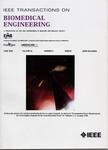版权所有:内蒙古大学图书馆 技术提供:维普资讯• 智图
内蒙古自治区呼和浩特市赛罕区大学西街235号 邮编: 010021

作者机构:Univ Sheffield Ctr Computat Imaging & Simulat Technol Biomed Sheffield S1 3JD S Yorkshire England Univ Leeds Ctr Computat Imaging & Simulat Technol Biomed Sch Comp Leeds W Yorkshire England Univ Leeds Sch Med Leeds W Yorkshire England Univ Oxford John Radcliffe Hosp Oxford Ctr Clin Magnet Resonance Res Div Cardiovasc Med Oxford England Queen Mary Univ London William Harvey Res Inst Cardiovasc Med London England Barts Hlth NHS Trust Barts Heart Ctr London England
出 版 物:《IEEE TRANSACTIONS ON BIOMEDICAL ENGINEERING》 (IEEE生物医学工程汇刊)
年 卷 期:2019年第66卷第7期
页 面:1975-1986页
核心收录:
学科分类:0831[工学-生物医学工程(可授工学、理学、医学学位)] 0808[工学-电气工程] 08[工学]
基 金:Amazon NVIDIA British Heart Foundation [PG/14/89/31194] China Scholarship Council VPH-DARE@IT FP7 EC Integrated Project [FP7-ICT-2011-9-601055] National Institute for Health Research Oxford Biomedical Research Center, Oxford University Hospitals Trust, University of Oxford British Heart Foundation Center of Research Excellence NIHR Biomedical Research Center at Barts SmartHeart EPSRC Programme [EP/P001009/1] VPH-DARE@ IT FP7 EC Integrated Project [FP7-ICT-2011-9-601055EPSR] C-funded MedIAN Partnership [EP/N026993/1] EPSRC [EP/N026993/1, EP/P001009/1] Funding Source: UKRI
主 题:3D convolutional neural network LV coverage image-quality assessment population image analysis Fisher discriminant criterion
摘 要:Cardiac magnetic resonance (CMR) images play a growing role in the diagnostic imaging of cardiovascular diseases. Full coverage of the left ventricle (LV), from base to apex, is a basic criterion for CMR image quality and is necessary for accurate measurement of cardiac volume and functional assessment. Incomplete coverage of the LV is identified through visual inspection, which is time consuming and usually done retrospectively in the assessment of large imaging cohorts. This paper proposes a novel automatic method for determining LV coverage from CMR images by using Fisher-discriminative three-dimensional (FD3D) convolutional neural networks (CNNs). In contrast to our previous method employing 2-D CNNs, this approach utilizes spatial contextual information in CMR volumes, extracts more representative high-level features, and enhances the discriminative capacity of the baseline 2-D CNN learning framework, thus, achieving superior detection accuracy. A two-stage framework is proposed to identify missing basal and apical slices in measurements of CMR volume. First, the FD3D CNN extracts high-level features from the CMR stacks. These image representations are then used to detect the missing basal and apical slices. Compared to the traditional 3-D CNN strategy, the proposed FD3D CNN minimizes within-class scatter and maximizes between-class scatter. We performed extensive experiments to validate the proposed method on more than 5000 independent volumetric CMR scans from the UK Biobank study, achieving low error rates for missing basal/apical slice detection (4.9%/4.6%). The proposed method can also be adopted for assessing LV coverage for other types of CMR image data.